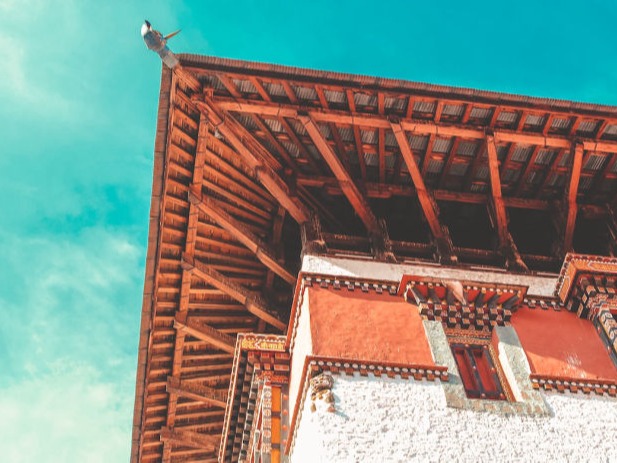
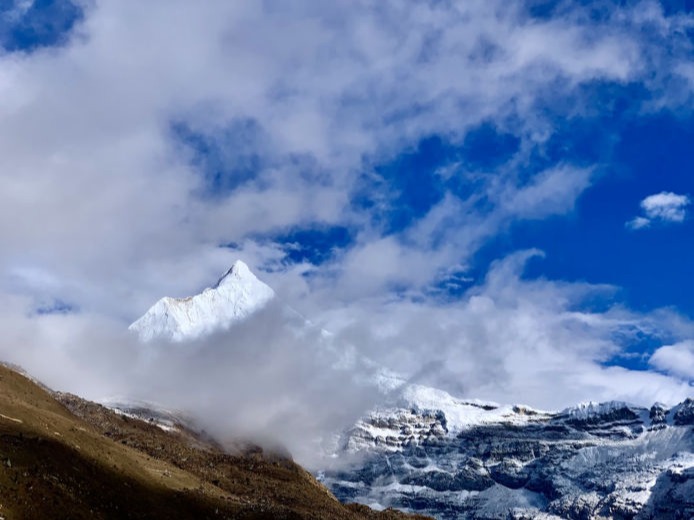
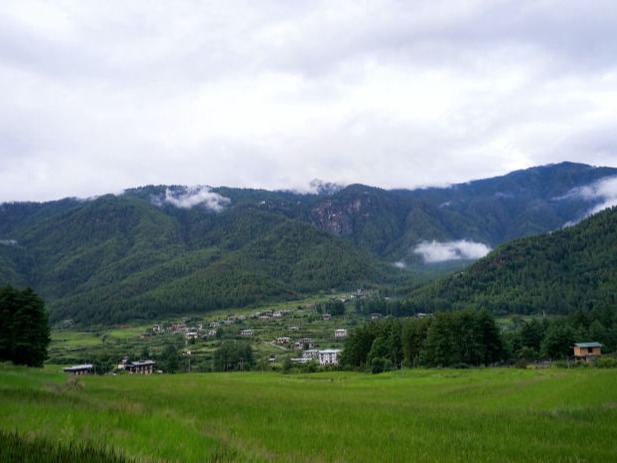
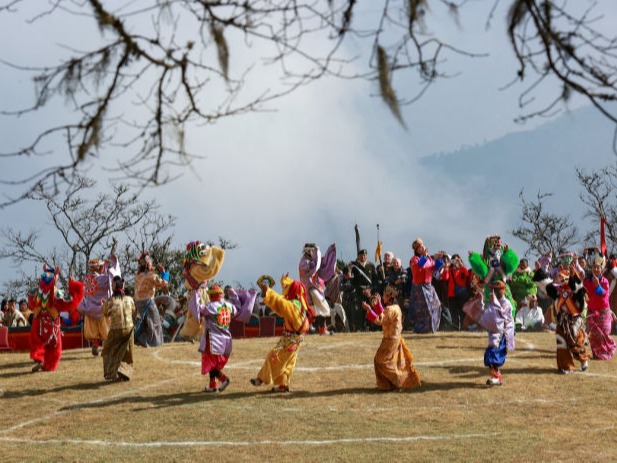
"The Land of the Thunder Dragon"
Bhutan, known as the "Land of the Thunder Dragon," is a hidden gem nestled in the heart of the Himalayas. This tiny kingdom is a must-visit destination for those seeking to experience a unique blend of ancient culture, breathtaking natural scenery, and warm hospitality.
Bhutan is a land of majestic mountains, verdant valleys, and pristine forests that is home to a rich and vibrant culture. This Himalayan kingdom has preserved its traditional way of life, and visitors are treated to a colorful tapestry of festivals, dances, and rituals that have been passed down through the generations.
For the adventurous, Bhutan offers an array of outdoor activities, including trekking, mountain biking, and river rafting. The kingdom's diverse landscapes provide a stunning backdrop for these activities, from the snow-capped peaks of the Himalayas to the lush green valleys and rushing rivers.
Bhutan is also home to some of the most beautiful and historic monasteries and dzongs (fortresses) in the world, many of which date back centuries. These architectural wonders are not only a testament to the kingdom's rich cultural heritage but also offer a glimpse into the spiritual practices of the Bhutanese people.
But what truly sets Bhutan apart is its commitment to Gross National Happiness, a philosophy that places the well-being of its people above all else. Visitors to Bhutan can experience this happiness firsthand through interactions with the friendly locals, sampling the delicious local cuisine, and immersing themselves in the kingdom's culture and traditions.
In Bhutan, time seems to stand still, and you can feel the magic of the past and the present converging into one. The sound of temple bells and prayer flags fluttering in the wind permeate the air, and you can see the smoke rising from the butter lamps that are lit to honor the deities.
Bhutan is a place where spirituality and nature intertwine, creating a symphony of sights, sounds, and sensations that awaken the senses and nourish the soul. It is a place where ancient wisdom and modern progress coexist in perfect harmony, and where the spirit of the land and its people casts a spell that lingers long after you leave.
Bhutan, a country located between India and China in the Eastern Himalaya, has an area of 47,000 square kilometers and a population of approximately 0.7 million. The capital is Thimphu and the time zone is plus 6 hours GMT. When visiting, it is recommended to pack light clothing with an additional layer for the evenings during the warmer Spring and Summer months (Mar-Aug), and a warm jacket, hat, gloves and fleece during the Autumn and Winter months (Sep-Feb). Bhutan is a Constitutional Monarchy with Tantric form of Mahayana Buddhism in Drukpa Kagyupa sect as its official religion. The official language is Dzongkha, but English is widely spoken throughout the country. The currency is the Ngultrum, which is on par with the Indian rupee, and the exchange rate is approximately US$ 1 = Nu. 84. The primary socket types for electricity are Euro, British, and Indian, with a voltage of 220-240 volts. Bhutan's national bird is the Raven (Corvus Corax Tibetanus), national flower is the Blue Poppy (Meconopsis Grandsis), national tree is Cypress (Cupressess Corneyana), and national animal is Takin (Budorcas Taxicolor). The national day is December 17, which commemorates the enthronement of the 1st King, Sir Ugyen Wangchuck in 1907. The national dress for men is Gho and for women is Kira. Although not compulsory, tipping has become a common practice in Bhutan and is entirely discretionary. If you book a trip, the travel consultants will provide you with a detailed list of what to bring.




● Bhutan is the only country in the world that measures its progress by Gross National Happiness, rather than Gross Domestic Product.
● Bhutan has no traffic lights. Instead, police officers direct traffic with their hands.
● Bhutan is the only country in the world where tobacco sales are illegal.
● Bhutan is home to the world's largest unclimbed mountain, Gangkhar Puensum.
● Bhutan is the first country in the world to have a completely organic farming policy.
● Bhutanese people wear their traditional dress, known as the "gho" and "kira," on a daily basis.
● Bhutanese architecture is characterized by colorful, ornate, and intricately carved buildings, including monasteries and dzongs.
● The national sport of Bhutan is archery, and competitions can get very lively and entertaining.
● Bhutan has a strict policy of preserving its environment and is one of the few carbon-negative countries in the world.
● Bhutan is the world's only country to have banned plastic bags and has made significant strides towards becoming a completely plastic-free nation.
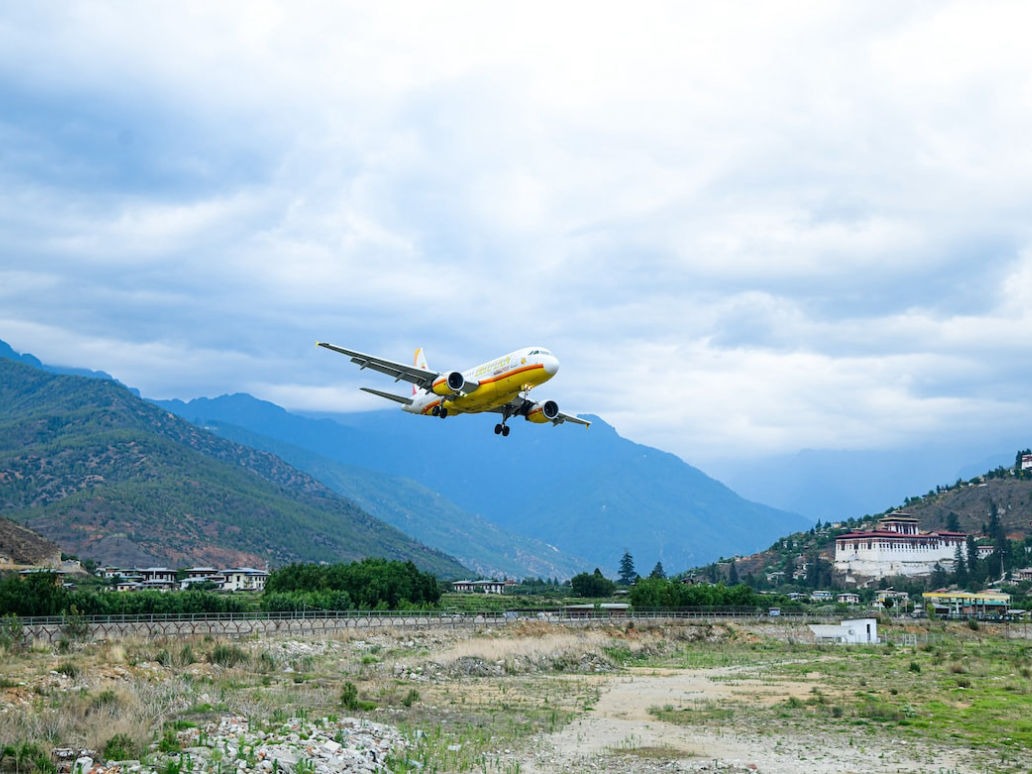
There are two main ways for tourists to enter Bhutan: by flight or by road. The easiest and most popular way to enter Bhutan is by flight. The country's only international airport, Paro International Airport, is located in Paro and serves as the main gateway for tourists. Flights to Paro International Airport are available from major cities in Asia, including Bangkok, Delhi, Kolkata, and Kathmandu. Bhutan's national airline, Drukair, operates flights to and from these destinations.
Another way to enter Bhutan is by road. The country has several border crossings with India, including the border town of Phuentsholing, which is the main entry point for tourists traveling by road. Phuentsholing is located about 170 km from Bagdogra airport in West Bengal, India, and can be reached by taxi or bus. Tourists can also enter Bhutan through the border towns of Gelephu and Samdrup Jongkhar, which are located in southern Bhutan and share a border with India's Assam state. However, it is important to note that tourists entering Bhutan by road must be on a guided tour, as independent travel is not allowed.
GNH stands for Gross National Happiness, which is a measure of economic and social development that was introduced by the King of Bhutan in the early 1970s. GNH is based on four pillars: sustainable and equitable socio-economic development, environmental conservation, preservation and promotion of culture, and good governance.
Bhutan is often referred to as the happiest country in the world because of its unique approach to development, which prioritizes the well-being of its citizens over economic growth. The country has made significant progress in reducing poverty and improving access to education and healthcare. Additionally, Bhutan is known for its commitment to environmental conservation and sustainability, with more than 50% of the country's land area designated as protected areas.
Furthermore, the Bhutanese people have a strong sense of community and cultural identity, which has helped to foster a sense of belonging and social cohesion. The government's emphasis on good governance and democratic principles has also contributed to a stable and peaceful society.
Overall, Bhutan's focus on holistic development and the well-being of its citizens, as reflected in the concept of GNH, has helped to create a society that is happy and content, despite facing challenges and limitations.
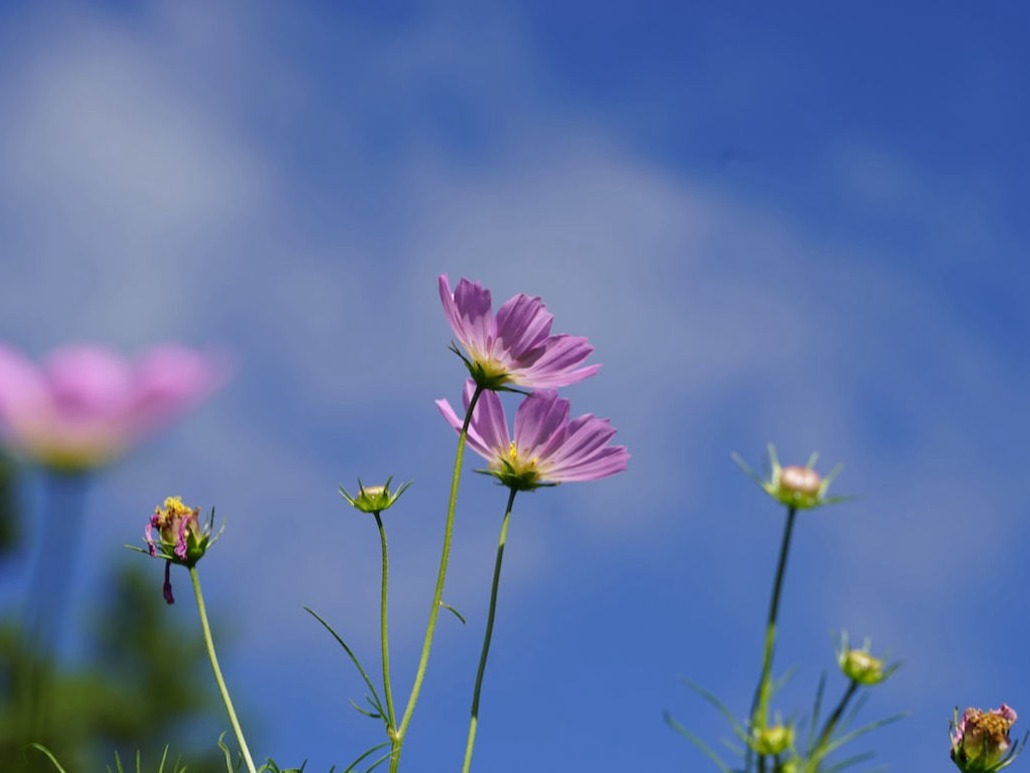
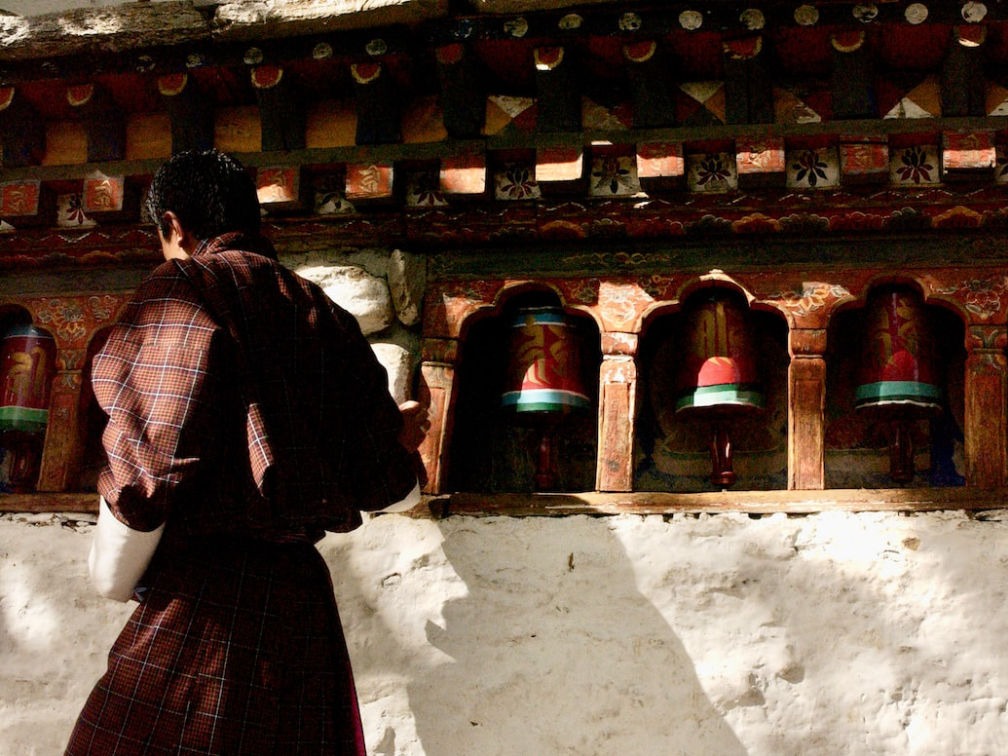
Bhutan's new tourism policy, known as "High Value, Low Volume Tourism," aims to promote sustainable tourism in the country by limiting the number of tourists and emphasizing high-quality, personalized experiences. Under this policy, all tourists must travel to Bhutan through a licensed tour operator and pay a daily tariff that covers accommodation, meals, transportation, and a guide. The tariff is higher than in other destinations, but it includes all the services that a tourist needs, providing a high-quality experience that emphasizes Bhutanese culture, history, and nature.
By limiting the number of tourists, Bhutan seeks to preserve its unique culture and environment while also ensuring that the benefits of tourism are distributed equitably among the Bhutanese people. The policy is designed to attract tourists who are interested in experiencing Bhutan's unique culture and pristine natural environment, rather than mass-market tourists who are primarily seeking affordable travel packages.
The "High Value, Low Volume Tourism" policy has been successful in promoting sustainable tourism and protecting Bhutan's cultural and natural heritage. It has also helped to generate revenue for the Bhutanese government, which is reinvested in social and economic development programs. Overall, this policy has been instrumental in promoting Bhutan as a unique and authentic travel destination that offers a high-quality experience that is different from other destinations.
Bhutanese architecture is characterized by its unique and distinct style, which is deeply rooted in the country's culture and tradition. The architecture of Bhutan is primarily influenced by the country's Buddhist heritage, and many of the buildings and structures are adorned with intricate carvings and paintings depicting Buddhist iconography.
One of the most prominent features of Bhutanese architecture is the use of rammed earth construction, which involves compacting layers of earth into solid walls. This technique not only provides insulation from the harsh mountain climate but also blends in with the natural environment. Another notable feature is the use of bright and vibrant colors, which are often used to decorate the wooden beams and window frames of buildings.
Dzongs, or fortress-monasteries, are perhaps the most iconic examples of Bhutanese architecture. These imposing structures serve as administrative centers, as well as religious institutions, and are typically built on high ground overlooking a valley or river. Dzongs are characterized by their massive walls, intricate woodwork, and elaborate courtyards.
In addition to dzongs, Bhutanese architecture also includes traditional houses, which are typically made of stone, mud, and timber. These houses are built around a central courtyard and feature intricately carved windows and doors.
Overall, Bhutanese architecture is an integral part of the country's cultural heritage and reflects the values and beliefs of its people. The unique and distinct style of Bhutanese architecture has helped to create a sense of identity and pride among the Bhutanese people and continues to inspire architects and designers around the world.
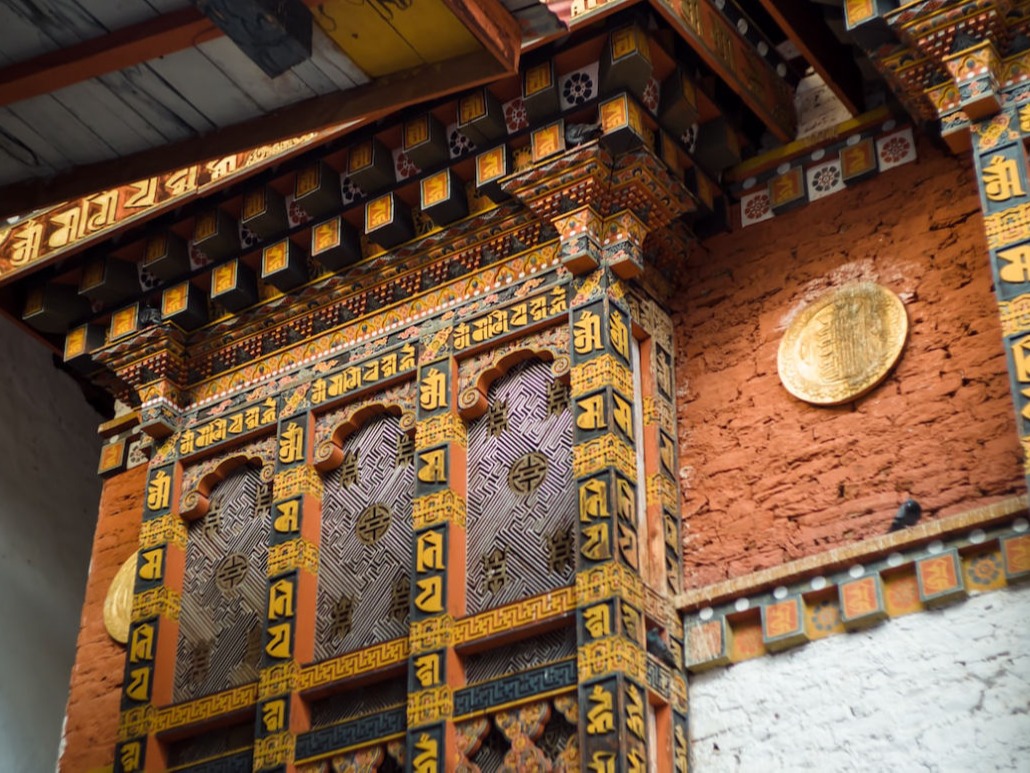
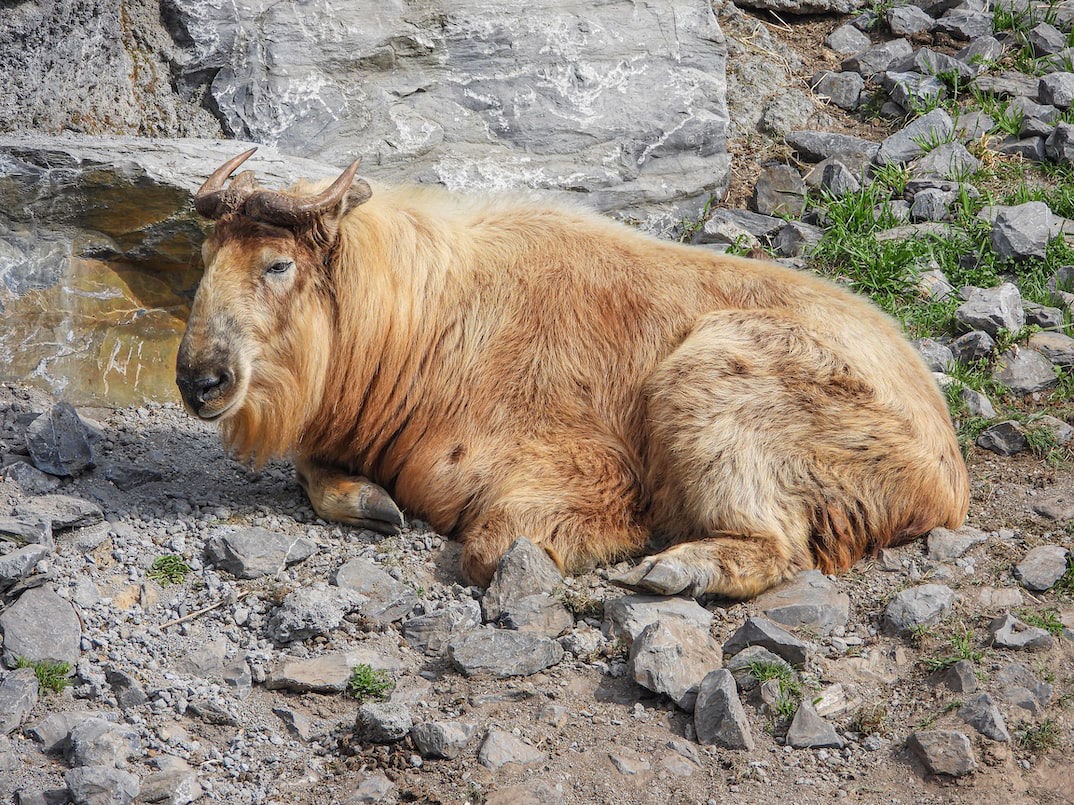
Bhutan is known for its rich biodiversity, and its wildlife sanctuaries are home to a wide variety of species, including rare and endangered animals. Some of the most notable wildlife sanctuaries in Bhutan include Jigme Dorji National Park, which covers an area of over 4,300 square kilometers and is home to several species of big cats, including tigers and snow leopards. The park is also home to other rare animals, such as the Himalayan black bear, red panda, and musk deer.
Another popular wildlife sanctuary in Bhutan is the Phibsoo Wildlife Sanctuary, which covers an area of over 260 square kilometers and is located in western Bhutan. The sanctuary is home to several species of primates, including the golden langur, which is an endangered species that is found only in Bhutan and neighboring Assam state in India.
Bhutan is also known for its birdlife, and its wildlife sanctuaries are home to several species of rare and endemic birds. The country's national bird is the raven, which is found throughout Bhutan and is a symbol of good luck and protection. Other notable bird species in Bhutan include the Himalayan monal, blood pheasant, and satyr tragopan.
Overall, Bhutan's wildlife sanctuaries are an important part of the country's natural heritage, and efforts are underway to conserve and protect its unique biodiversity. The government of Bhutan has made a commitment to maintaining at least 60% forest cover and protecting its natural resources for future generations
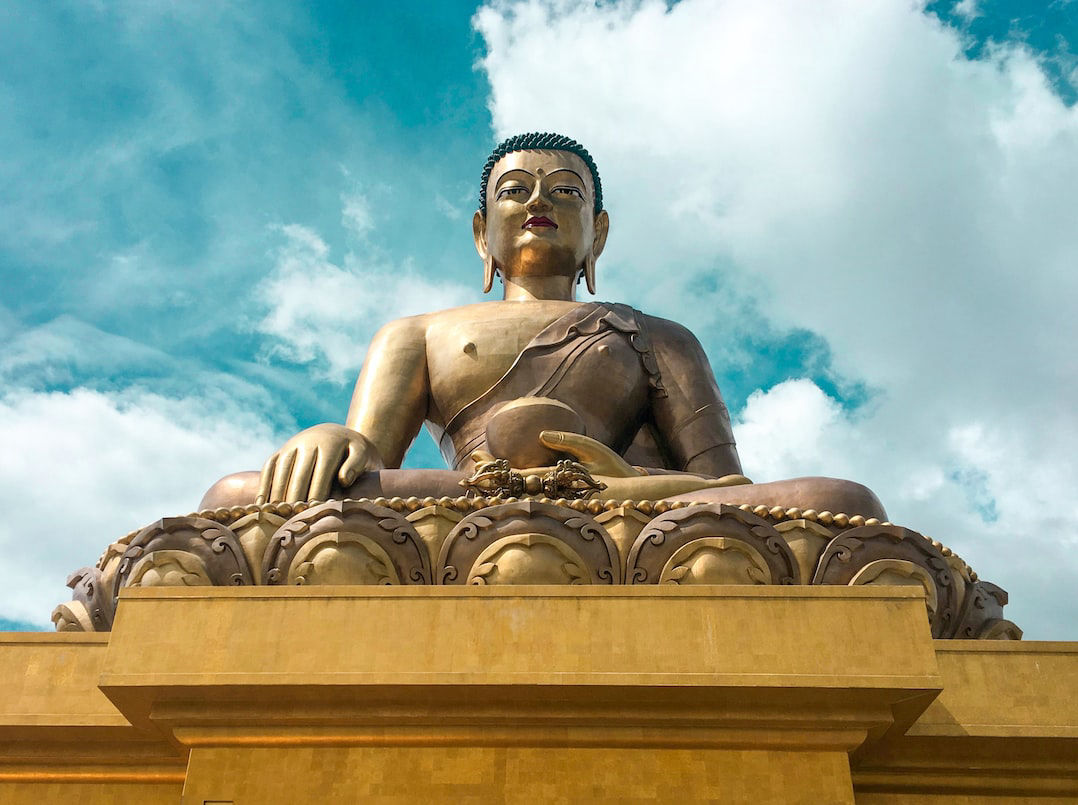
Made with
HTML Code Generator